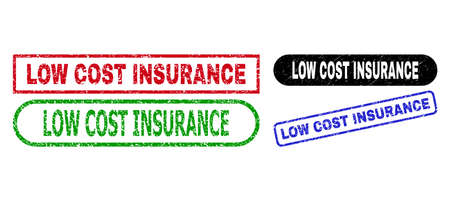Introduction to Accidental Damage Cover
Accidental damage cover is a key feature often found in UK home insurance policies, providing homeowners with an extra layer of financial protection. In simple terms, it refers to cover for unexpected and sudden incidents that cause physical damage to your property or belongings—think along the lines of spilling red wine on your carpet, smashing a window with a football, or drilling through a hidden pipe while putting up shelves. This type of cover matters to UK homeowners because accidents happen all too easily in daily life, and repair or replacement costs can quickly add up. Unlike standard buildings or contents insurance, which typically covers loss or damage from events like fire, theft, or flooding, accidental damage specifically deals with those unpredictable mishaps caused by you, your family, or sometimes even visitors. For many people in the UK, understanding whether accidental damage is included as standard—or if it needs to be added as an optional extra—can make a significant difference when making a claim and managing household risks. In essence, accidental damage cover gives peace of mind against those everyday blunders that aren’t covered by basic policies but can still leave you facing unexpected bills.
2. What Counts as Accidental Damage?
In the context of UK home insurance, “accidental damage” refers to unexpected and unintentional physical harm that occurs suddenly to your property or belongings. This type of cover is designed to protect you from those mishaps that happen out of the blue—think spilt wine on a carpet or a smashed television. But what exactly does this mean according to most UK insurers? Lets break it down.
Typical Examples of Accidental Damage
Accidental damage usually covers incidents such as:
| Scenario | Description |
|---|---|
| Spilling liquids on electronics | Your child knocks juice over your laptop, causing it to stop working. |
| Breakage of glass fixtures | You accidentally smash a window or glass coffee table while moving furniture. |
| Drilling through pipes or cables | You put up shelves and drill into a hidden pipe, causing water damage. |
| Paint or chemical spills | A tin of paint tips over onto your new carpet during decorating. |
| Dropped items damaging floors or worktops | A heavy pan slips from your hands and cracks the kitchen worktop. |
| Kicking a football indoors | Your child kicks a ball in the lounge, breaking the TV screen. |
What Makes It Accidental?
The key is that the damage must be both sudden and unforeseen—not caused by neglect, wear and tear, poor workmanship, or deliberate acts. For example, if you trip and drop a vase, shattering it, thats accidental. If your carpet wears thin over years, thats not.
Common Situations Recognised as Accidental Damage:
- Mishaps during DIY: Drilling into walls and hitting pipes or wires by mistake.
- Household blunders: Spilling drinks on soft furnishings or electronics.
- Unintended breakages: Dropping ornaments, damaging flooring or surfaces unintentionally.
- Children’s accidents: Kids playing indoors and causing sudden damage to possessions.
A Quick Comparison: Covered vs Not Covered (Typical Policies)
| Usually Covered | Usually Not Covered |
|---|---|
| Bursting a pipe accidentally during DIY | Gradual leaks due to lack of maintenance |
| Dropping and breaking a television set | Damage caused by pets scratching furniture |
| Spilling red wine on the sofa suddenly | Stains from long-term neglect or repeated incidents |
It’s important to check your policy wording carefully because each insurer may define accidental damage differently and apply their own exclusions. Always look for specific terms in your documents such as “sudden”, “unexpected”, or “unintentional” when assessing what qualifies for accidental damage cover in your UK home insurance policy.

3. What’s Not Included: Common Exclusions
While accidental damage cover can offer peace of mind, it’s just as important to understand what is typically not covered under most UK home insurance policies. Knowing these exclusions helps you avoid unpleasant surprises when making a claim.
General Wear and Tear
Insurance providers in the UK usually do not pay out for general wear and tear or gradual deterioration of your belongings or property. This means that if your carpet gets threadbare over time or your sofa fades due to sunlight, such issues are not classed as accidental damage but rather as normal usage – and therefore excluded from cover.
Mechanical or Electrical Breakdown
If your television stops working because of an internal fault or your washing machine breaks down due to mechanical failure, these types of incidents are generally not covered by accidental damage protection. Home insurance is designed to cover sudden, unforeseen accidents – not malfunctions.
Damage by Pets
A common exclusion in UK policies is any damage caused by pets. For example, if your dog chews up the skirting boards or your cat scratches the sofa, insurers typically won’t pay out for repairs or replacements under accidental damage cover.
Deliberate Acts
If damage is caused intentionally – whether by you, a family member, or a guest – this will be excluded from accidental damage claims. Insurers expect policyholders to take reasonable care of their property and will not accept claims for wilful destruction.
Other Typical Exclusions
- Moth and vermin infestations
- Deterioration due to damp, rot, or rust
- Faulty workmanship or poor DIY jobs
A Quick Example
If you spill red wine on your cream carpet by accident, you’re likely to be covered (if you have accidental damage add-on). But if the stain was caused while trying to fix something yourself and you made a mistake, or it happened slowly over time, it’s probably excluded.
The key takeaway is always to check your individual policy wording and ask your insurer for clarification if unsure. Exclusions can vary between insurers and different levels of cover, so being clear about what’s not included helps you make informed choices about your home insurance in the UK.
4. Types of Policies Offering Accidental Damage Cover
In the UK, accidental damage cover is not always included as standard in home insurance policies. Instead, it’s often available as an optional add-on or included only with more comprehensive plans. Understanding which types of home insurance policies offer this protection can help you make an informed choice.
Main Types of Home Insurance Policies
| Policy Type | Standard Inclusion | Optional Add-On | Common Features |
|---|---|---|---|
| Buildings Insurance | Rarely | Yes | Covers structure; accidental damage add-on for fixtures (e.g., windows, pipes) |
| Contents Insurance | Sometimes (with premium plans) | Yes | Covers personal belongings; accidental damage add-on for electronics, furniture, etc. |
| Combined Buildings & Contents Insurance | Rarely fully included | Yes (often bundled for a discount) | Comprehensive protection; accidental damage can cover both structure and contents when added |
| High-Net-Worth/Home Prestige Policies | Often Included as Standard | N/A | Bespoke cover with accidental damage as part of the core policy for valuable homes and possessions |
What Does “Add-On” Mean?
An “add-on” means you pay a little extra to include accidental damage cover with your policy. It’s not automatically included in most basic policies. For example, if you have a standard buildings or contents policy, you can usually upgrade to include accidental damage by contacting your insurer or ticking a box during your online application. The cost varies depending on the provider and the level of cover you choose.
How Do You Know If You’re Covered?
You should always check your policy schedule and wording. If you’re unsure, contact your insurer directly and ask whether accidental damage is covered and what the limits are. Some insurers offer limited accidental damage as standard (like for fixed glass or sanitary fittings), but full cover—such as spilling wine on your carpet or knocking over a TV—usually requires the full accidental damage add-on.
Summary Table: Typical Accidental Damage Cover by Policy Type in the UK
| Policy Type | Accidental Damage Included? |
|---|---|
| Basic Buildings/Contents Only | No (optional add-on) |
| Mid-Level/Comprehensive Plans | Partially (sometimes limited inclusion) |
| Premium/High-Net-Worth Plans | Usually Yes (as standard) |
Key Takeaway:
If you want peace of mind against life’s little mishaps, always double-check if accidental damage cover is included in your UK home insurance policy or if you need to add it on separately.
5. Making a Claim for Accidental Damage
Step-by-Step Guide to Reporting Accidental Damage
If you experience accidental damage in your home, it’s important to act quickly and follow the right steps to ensure your claim is processed smoothly. Here’s how you can make a claim under your UK home insurance policy:
Step 1: Check Your Policy
Before you do anything, review your policy documents to confirm that accidental damage is covered. Not all policies include this as standard, so look for the relevant section or call your insurer if you’re unsure.
Step 2: Document the Damage
Take clear photos and, if possible, videos of the damaged area or item. Make notes about what happened, including the date, time, and circumstances. This evidence will be crucial for your insurer’s assessment.
Step 3: Notify Your Insurer Promptly
Contact your insurance provider as soon as possible—ideally within 24 to 48 hours of discovering the damage. Most insurers have a claims helpline or an online portal. Delays can sometimes affect your entitlement to claim.
Step 4: Complete the Claim Form
Your insurer will usually require you to fill out a claim form detailing the incident. Be honest and thorough—missing information can slow down the process.
Step 5: Provide Supporting Documentation
You’ll likely need to provide receipts, proof of purchase, repair quotes, or any other documents that support your claim. The more information you supply, the quicker your claim can be assessed.
Step 6: Cooperate with the Loss Adjuster
The insurer may appoint a loss adjuster to inspect the damage in person. Arrange access at a convenient time and answer any questions they may have.
Typical Timeframes
Most insurers aim to settle straightforward accidental damage claims within a few weeks, provided all information is supplied promptly. More complex cases may take longer if investigations or additional documentation are needed.
Key Takeaway
Always report accidental damage quickly, provide full documentation, and keep communication lines open with your insurer. Following these steps ensures your claim stands the best chance of being approved without unnecessary delays.
6. Tips for Choosing and Using Accidental Damage Cover
Compare Policies Carefully
Before settling on a home insurance policy with accidental damage cover, always compare different insurers’ offerings. Look out for differences in what is classed as ‘accidental damage,’ the exclusions, and the limits on claims. Not all policies are created equal—some might cover things like spilt paint on carpets, while others may not. Use comparison sites popular in the UK or get advice from a local broker.
Understand What’s Covered (and What’s Not)
Read the small print to check exactly what your policy includes. Typical exclusions in the UK often cover general wear and tear, damage caused by pets, or issues arising from poor maintenance. If you have children or host frequent gatherings, make sure your policy reflects your lifestyle risks.
Check Excess Amounts
The excess is the amount you’ll need to pay if you make a claim. A higher excess can lower your premium but means more out-of-pocket cost if something goes wrong. Make sure the excess fits your budget and risk tolerance.
Look for Optional Extras
Some UK insurers allow you to tailor your cover—think about adding accidental damage as an optional extra if it’s not included as standard. Also, consider separate cover for high-value items like jewellery or electronics if they aren’t fully protected under your main policy.
Avoid Common Pitfalls
Many people assume all mishaps are covered, but accidental damage cover doesn’t protect against everything. Be wary of making small claims that could increase your future premiums or even result in non-renewal. Maintain your home regularly; insurers may reject claims resulting from neglect.
Keep Good Records
If you ever need to make a claim, having receipts, photos, and an inventory of valuables can speed up the process. In the UK, insurers appreciate clear evidence when assessing claims.
Review Your Policy Annually
Your needs can change—maybe you’ve renovated your home or bought new gadgets. Check each year that your accidental damage cover still suits your situation and update it as needed. This ensures you’re not paying for unnecessary extras or leaving yourself exposed.


